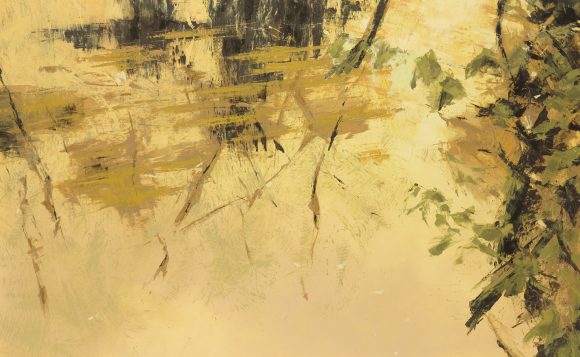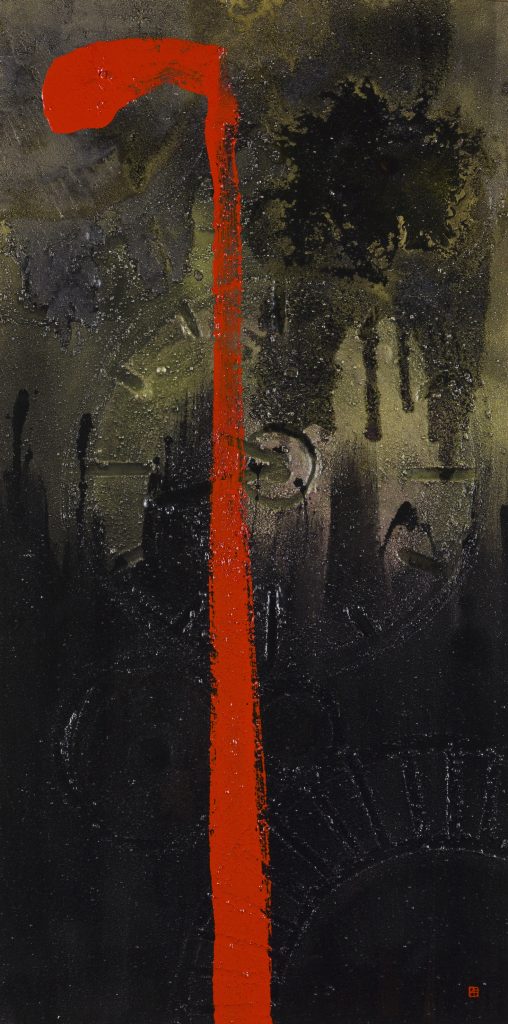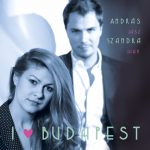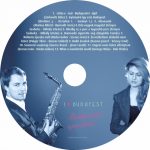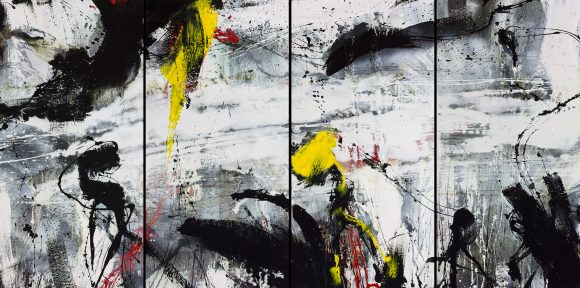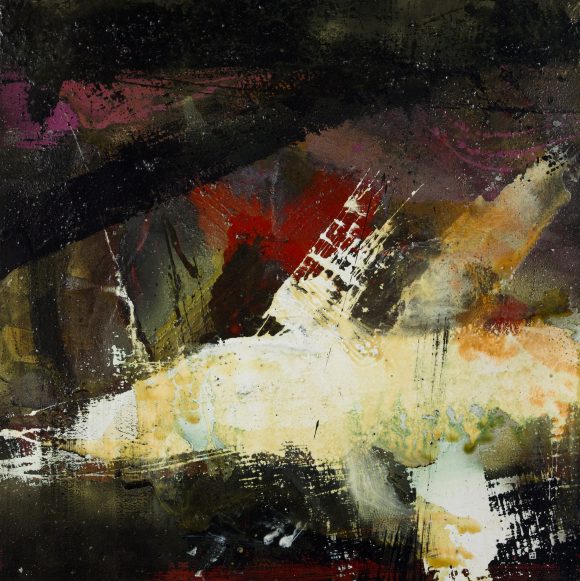In spring of 2013, Art Salon\Tarsalgo Gallery’s artists debuted with great success in Vienna with the „Dialog” group exhibition. In June 2014, „Dialog II” will be settled in Gallery Eugen Lendl, in the city of Graz, Austria. The concept, just as last year, will be creating harmony of the heterogeneous material created of several artists’ artworks, so the works open themselves to each other, but they do not lose their uniqueness. Róbert Csáki, Imre Barna Balázs and PAF are excellent contemporary painters, each of them express their thoughts and feelings through painting, but with a different technique, in a different style.
Róbert Csáki’s painterly impressions are visualized by gorgeous colours and masterful compositions. On his paintings we travel into a mystical, unreal but still familiar nature. „Hommage à Caspar David Friedrich” guides us from the shady frame to the centre of the composition, so we can linger on in the bland distant lights.
Strong gestures and colours dominate the painting of PAF, which are the abstract forms of an inner world filled with vehement emotions. The sharp surfaces, stirring colours of his paintings create deep inner spaces. „Gesture Box I” is a cube, each of its sides is covered with PAF’s gestures. In this wise the pictures become spatial, and are showing the infinity and the non-enclosing, which characterize PAF’s painting.
Imre Barna Balázs seizes with amazing sensitivity the phenomenon of experience, and how the sense and the soul can shape the sensation of the world. The system of gestures on „Flux LXII” reflects the forms of nature. The intensity of colours reveals the great power of our thoughts and emotions.
The variegation of „Dialog II” will be enhanced beyond the Hungarian painters by the artists of Gallery Eugen Lendl; Michael Fanta, Christian KRI Kammerhofer, Stefan Maitz and Josef Wurm as well. Though each artwork creates an own world and aura, they can effect each other, and their dialog can vest them with stunning, new meanings. „Dialog II” will aim to represent through the connection of different artworks the open, inexhaustible, always renewable character of art.
photo: misi
written by: Zsófi Máté

















